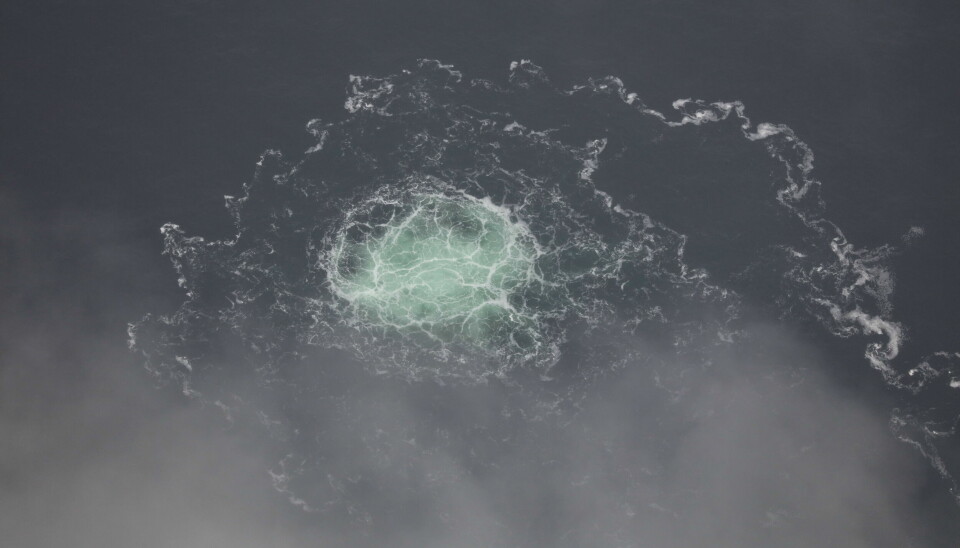Goretex – revolution for outdoor life when casual clothes began to breathe

HISTORY OF TECHNOLOGY. As early as the 1930s, experiments were performed with plastic in clothing as protection against rain and debris. But only with Goretex 40 years later did the garments breathe, and it revolutionized our casual wear.
Many people probably remember the gallon of childhood, a dense and durable material that effectively kept away moisture and wind – but which got wet from the inside due to condensation because it could not breathe. That property shared the material with many others in the childhood of functional clothing.
Making our clothes waterproof against rain and debris is not a new invention, but it would take some time before they became smart. For a long time, tar, oil or rubber were used to keep moisture and moisture away. All had the disadvantage that they became heavy and awkward as soon as they got wet. Plastic would change everything.
The chemist Charles Mackintosh in Glasgow invented the first waterproof garment in 1824, a coat of “Indian rubber cloth”. It was natural rubber softened with naphtha which he rolled out and placed between two layers of linen fabric, where it was allowed to harden. A raincoat is still called “mac” in the British Isles.
Rubber boots are named Wellington after their inventor Arthur Wellesley, Duke of Wellington and war hero at Waterloo. In 1817 he made leather boots, which 35 years later were covered with rubber when vulcanization was invented.
Tar on canvas
The English also experimented with ironing linseed oil and tar on canvas. This is how the tarpaulin was added, among other things. In the same way, the Norwegian Helly Hansen sealed fishing shirts with linseed oil in 1877, as did the later couple Hanna and Julius Didrikson on the Swedish west coast.
In the early 1930s came the first commercial plastics. Helly Hansen began experimenting with applying a thin film of PVC, ploy vinyl chloride, to cotton fabric. It took until 1949 before they succeeded, with the textile helox. By then, the Swedish gallon, a much thicker and stiffer PVC-coated textile, had already arrived.
After the war, plastics such as nylon were woven into more and more textiles. But functional materials, textiles with breathable plastic, would still be delayed. It was not until 1969 that the first came about, by chance. This is thanks to Bob Gore.
He was the son of Bill Gore with a family business that made cables for computers. They used early Teflon, polytetrafluoroethylene, as an insulating casing. But it was not resilient and stretchy, despite years of experimentation.
It created hints of pores in the polyurethane.
One day, Bob Gore had to stir with a dip heater in a melt – and suddenly the Teflon became both elastic and porous! It was named expanding polytetrafluoroethylene, ePTFE, and became the layer that breathes in the Goretex fabric.
Bob Gore obtained a patent for his stretchable and porous Teflon in 1970, and the Goretex fabric saw the light of day. During the first half of the 70’s, it was mainly used as a tent cloth. The textile to which the Goretex layer was attached was manufactured by, among others, a Swedish company, FOV Fodervävnader, which also supplied textiles to Helly Hansen – plus Swedish Tenson and Craft of Scandinavia.
During the 1980s, another important part came in the development of functional garments: the microfibers, which can be woven very tightly without the garments becoming heavy. They were crucial for the development of light windproof garments. But they resist water worse.
Same principle as Goretex
FOV began to develop microporous polyurethane coatings, at about the same time as Helly Hansen, says Mats Johansson, who worked at FOV and is now researching functional materials at the University of Borås.
Water and solvents were mixed and evaporated at low temperature. It created hints of pores in the polyurethane. When the polyurethane was then cured at over 100 degrees, the pores were given a size that let steam through but not water droplets.
The principle was the same as Goretex used: a porous plastic material between layers of textiles that together withstood moisture and wind, but let the sweat pass out. The layers have different functions: dense fabric stops wind, while the air between layers protects against cold. And then the porous plastic that releases sweat but stops rain.
– Water has so much better thermal conductivity than air. Cold water cools you down extremely fast. It is incredibly important to get rid of moisture from the body, it should be released to the middle layer that can buffer and take care of it, says Mats Johansson.
– Goretex had a better capacity to release water vapor than the Swedish materials. We had a hard time getting as many and evenly distributed pores.
Environmentally, however, plastics are not a successful solution, and in recent years Goretex has begun to phase out all use of fluorinated hydrocarbons, which contribute greatly to the greenhouse effect. Another problem is microplastics. Mats Johansson and other researchers in the field are therefore studying, among other things, environmental effects and possible replacements for the plastic that once revolutionized our leisure and workwear.
Your bonus as a New Technology reader: A part of Swedish technology history
As a bonus, you who are a subscriber to Ny Teknik digitally receive a selection of articles from Teknikhistoria, a magazine about the technical and industrial development that has led to society as it looks today – with a focus on Swedish development.
Do you want to get a piece of history straight home in your mailbox? Sign up for your subscription today at: teknikhistoria.prenservice.se
Like Teknikhistoria on Facebook to get the latest news from history!



